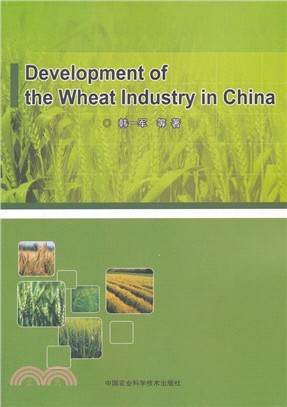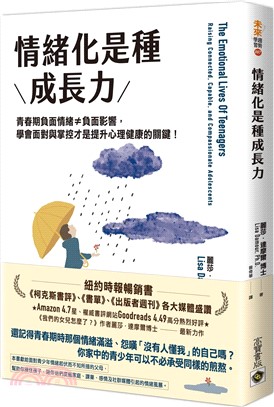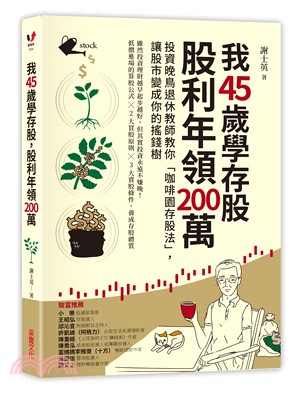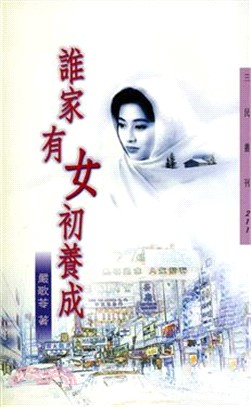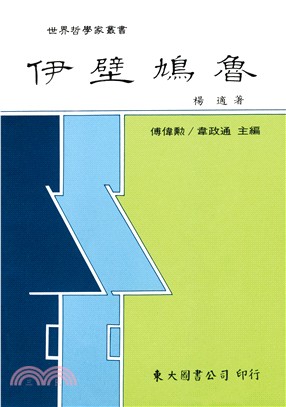Development of the Wheat Industry in China(簡體書)
商品資訊
相關商品
商品簡介
作者簡介
目次
書摘/試閱
商品簡介
《中國小麥產業發展分析(英文版)》全面深入地對我國小麥產業發展現狀以及政策制定等問題進行研究,總結目前國內外小麥生產、消費、流通、加工、貿易等領域的發展特點,探索其存在的主要問題和制約因素,評價小麥產業政策的執行效果,預測小麥中長期供求發展趨勢。
作者簡介
Yijun Han is a professor of Agricultural Economists at China Agricultural University. He obtained his PhD from China Renmin University in Beijing. His research mainly includes agricultural marketing, trade, investment and industry development policies. As a professor, he teaches analytical principles in agriculturally related industries worldwide and marketing of agncultural products.
Professor Han is a prolific writer and a regular participant in academic and policy debates. His work has been published in scholarly journals, such as China Pollution Resources and Environment, Chinese Rural Economy and China Rural Survey, more popular forums, and the Farmers' Daily and Grain News. From 1998 to 2009 he worked at the Research Center for Rural Economy, Ministry of Agriculture. From 2009 to 2013 he was also involved in the Agricultural Trade Promotion Center, Ministry of Agriculture.
Professor Han is a prolific writer and a regular participant in academic and policy debates. His work has been published in scholarly journals, such as China Pollution Resources and Environment, Chinese Rural Economy and China Rural Survey, more popular forums, and the Farmers' Daily and Grain News. From 1998 to 2009 he worked at the Research Center for Rural Economy, Ministry of Agriculture. From 2009 to 2013 he was also involved in the Agricultural Trade Promotion Center, Ministry of Agriculture.
目次
1 Introduction
2 Wheat production in China
2.1 The importance of wheat in China
2.2 Wheat production
2.3 Regional distribution of wheat
2.4 Major factors affecting wheat production in China
3 Marketing and inter-provincial transport of wheat in China
3.1 Reform of the grain marketing system
3.2 Current situation of wheat marketing and distribution
3.3 Distribution of profits generated by the wheat industry
3.4 Trends in wheat prices
4 Wheat milling in China
4.1 Development of the wheat milling industry
4.2 Products from wheat milling
4.3 Current situation of wheat milling technology
4.4 Main problems in the wheat milling industry
5 Wheat trade changes in China
5.1 Changes in the wheat trade
5.2 Changes in the wheat trade status
5.3 Changes in wheat trading partners
5.4 Evolution of wheat trade categories
5.5 Changes in wheat trade prices
6 Wheat consumption changes in China
6.1 Current situation
6.2 Characteristics of wheat consumption
6.3 Evolution and current situation of wheat supply and demand balance
6.4 Spatial variation in wheat consumption
7 Wheat industrial chains in China
7.1 Links in the wheat industry chain
7.2 Costs and benefits in wheat industrial chains
7.3 Problems identified in the survey
8 Policies related to the wheat industry in China
8.1 Context and goals
8.2 Policy analysis of the wheat industry in China
8.3 Policy directions for the Chinese wheat industry
9 Conclusion and outlook
10 Supporting References
Appendix
Acknowledgements
2 Wheat production in China
2.1 The importance of wheat in China
2.2 Wheat production
2.3 Regional distribution of wheat
2.4 Major factors affecting wheat production in China
3 Marketing and inter-provincial transport of wheat in China
3.1 Reform of the grain marketing system
3.2 Current situation of wheat marketing and distribution
3.3 Distribution of profits generated by the wheat industry
3.4 Trends in wheat prices
4 Wheat milling in China
4.1 Development of the wheat milling industry
4.2 Products from wheat milling
4.3 Current situation of wheat milling technology
4.4 Main problems in the wheat milling industry
5 Wheat trade changes in China
5.1 Changes in the wheat trade
5.2 Changes in the wheat trade status
5.3 Changes in wheat trading partners
5.4 Evolution of wheat trade categories
5.5 Changes in wheat trade prices
6 Wheat consumption changes in China
6.1 Current situation
6.2 Characteristics of wheat consumption
6.3 Evolution and current situation of wheat supply and demand balance
6.4 Spatial variation in wheat consumption
7 Wheat industrial chains in China
7.1 Links in the wheat industry chain
7.2 Costs and benefits in wheat industrial chains
7.3 Problems identified in the survey
8 Policies related to the wheat industry in China
8.1 Context and goals
8.2 Policy analysis of the wheat industry in China
8.3 Policy directions for the Chinese wheat industry
9 Conclusion and outlook
10 Supporting References
Appendix
Acknowledgements
書摘/試閱
《中國小麥產業發展分析(英文版)》:
2.4.2 Weak farmland infrastructure
In recent years, China has increased the inputs of agricultural production. There has been a significant increase in river regulation, but small on-farm water conservation facilities could be greatly increased and maintained. The drainage systems, especially ditches along roadsides have inadequate capacity to avert flooding. Effective irrigation can be applied to less than 45% of the agriculturalland, and the effective use ofirrigation water is 45%, more than 30% lower than that in developed countries. Farm mechanization remains backward, with modem machines being used on less than a quarter of the wheat area. In the current scenario of global warming, natural disasters are increasing in frequency making the aging farmland infrastructure even more prone to disaster. To address such threats to wheat production, disaster monitoring and early warning systems must be improved and disaster reduction technology and emergency management systems must be developed.
2.4.3 Small farm size and low household efficiency
Because of the small per capita area of cultivated land in China, individual farmers grow wheat in a small-scale, dispersed way. The varieties are numerous, miscellaneous, and often mixed. The consequence is a chaotic marketing system and little control of grain quality. Centralized storage systems for different quality grades are rare, so that little economic advantage can be obtained from varieties with special quality attributes. Due to increasing costs of production, that is, inputs such as labor and fertilizer, the benefits of favorable policies are largely offset by rising costs of production and falling profits. Compared to working in cities the rewards from farming are falling, thus affecting the enthusiasm of farmers to produce grain .
2.4.4 Low level of industrialization
Wheat production in China mainly depends on ultra-small family businesses. The ability of farm groups to form co-operatives at the village, township, and even county level using agreed varieties, unified management, and centralized storage facilities with clear marketing and leveraging advantages remains limited. Therefore, the quality and quantity of wheat from a particular location cannot be guaranteed. With better organised co-operative approaches there will be more opportunities to take advantage of mechanization, as well as application of new technologies in improving both yield and quality, and marketing of uniform grain quality grades.
2.4.5 Low technology of wheat production
Although the per unit area yield of wheat in China is at a medium to high level on a world basis, the technology of production remains low. For a long time the primary goal of Chinese agricultural policies was to address the problem of food and clothing for a large population. The first objective was to increase production. Grain quality was neglected and the practices used to increase yield resulted in a commodity with generally poor processing quality. These factors were made worse by the combined effects of small-scale production, many soil types, variable agronomic practices, and multiple varieties with different grain types. Superimposed upon this was the variation between regions and years.
2.4.6 Lack of special vanieties
From 2003 to 2006, the Ministry of Agriculture Wheat Variety Approval Committee authorized 124 wheat varieties; 15 were high quality strong gluten cultivars and 4 were weak gluten cultivars that accounted for 12% and 3% of production, respectively. There was still a shortage of new high-quality strong gluten and weak gluten wheat varieties. Moreover, with intensive cultivation, dense sowing, and improper water and fertilizer use the genetic potential of high quality varieties was not achieved, resulting in large fluctuations in quality between years and regions, and therefore a lack of consistency of product. In summary, high quality varieties cannot produce high quality grain without the application of appropriate management practices.
……
2.4.2 Weak farmland infrastructure
In recent years, China has increased the inputs of agricultural production. There has been a significant increase in river regulation, but small on-farm water conservation facilities could be greatly increased and maintained. The drainage systems, especially ditches along roadsides have inadequate capacity to avert flooding. Effective irrigation can be applied to less than 45% of the agriculturalland, and the effective use ofirrigation water is 45%, more than 30% lower than that in developed countries. Farm mechanization remains backward, with modem machines being used on less than a quarter of the wheat area. In the current scenario of global warming, natural disasters are increasing in frequency making the aging farmland infrastructure even more prone to disaster. To address such threats to wheat production, disaster monitoring and early warning systems must be improved and disaster reduction technology and emergency management systems must be developed.
2.4.3 Small farm size and low household efficiency
Because of the small per capita area of cultivated land in China, individual farmers grow wheat in a small-scale, dispersed way. The varieties are numerous, miscellaneous, and often mixed. The consequence is a chaotic marketing system and little control of grain quality. Centralized storage systems for different quality grades are rare, so that little economic advantage can be obtained from varieties with special quality attributes. Due to increasing costs of production, that is, inputs such as labor and fertilizer, the benefits of favorable policies are largely offset by rising costs of production and falling profits. Compared to working in cities the rewards from farming are falling, thus affecting the enthusiasm of farmers to produce grain .
2.4.4 Low level of industrialization
Wheat production in China mainly depends on ultra-small family businesses. The ability of farm groups to form co-operatives at the village, township, and even county level using agreed varieties, unified management, and centralized storage facilities with clear marketing and leveraging advantages remains limited. Therefore, the quality and quantity of wheat from a particular location cannot be guaranteed. With better organised co-operative approaches there will be more opportunities to take advantage of mechanization, as well as application of new technologies in improving both yield and quality, and marketing of uniform grain quality grades.
2.4.5 Low technology of wheat production
Although the per unit area yield of wheat in China is at a medium to high level on a world basis, the technology of production remains low. For a long time the primary goal of Chinese agricultural policies was to address the problem of food and clothing for a large population. The first objective was to increase production. Grain quality was neglected and the practices used to increase yield resulted in a commodity with generally poor processing quality. These factors were made worse by the combined effects of small-scale production, many soil types, variable agronomic practices, and multiple varieties with different grain types. Superimposed upon this was the variation between regions and years.
2.4.6 Lack of special vanieties
From 2003 to 2006, the Ministry of Agriculture Wheat Variety Approval Committee authorized 124 wheat varieties; 15 were high quality strong gluten cultivars and 4 were weak gluten cultivars that accounted for 12% and 3% of production, respectively. There was still a shortage of new high-quality strong gluten and weak gluten wheat varieties. Moreover, with intensive cultivation, dense sowing, and improper water and fertilizer use the genetic potential of high quality varieties was not achieved, resulting in large fluctuations in quality between years and regions, and therefore a lack of consistency of product. In summary, high quality varieties cannot produce high quality grain without the application of appropriate management practices.
……
主題書展
更多
主題書展
更多書展本週66折
您曾經瀏覽過的商品
購物須知
大陸出版品因裝訂品質及貨運條件與台灣出版品落差甚大,除封面破損、內頁脫落等較嚴重的狀態,其餘商品將正常出貨。
特別提醒:部分書籍附贈之內容(如音頻mp3或影片dvd等)已無實體光碟提供,需以QR CODE 連結至當地網站註冊“並通過驗證程序”,方可下載使用。
無現貨庫存之簡體書,將向海外調貨:
海外有庫存之書籍,等候約45個工作天;
海外無庫存之書籍,平均作業時間約60個工作天,然不保證確定可調到貨,尚請見諒。
為了保護您的權益,「三民網路書店」提供會員七日商品鑑賞期(收到商品為起始日)。
若要辦理退貨,請在商品鑑賞期內寄回,且商品必須是全新狀態與完整包裝(商品、附件、發票、隨貨贈品等)否則恕不接受退貨。




